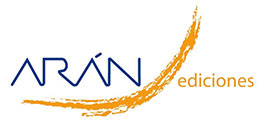Burlingame, B. A. and Dernini, S. Sustainable diets: Directions and solutions for policy, research and action., 2012, https://www.bioversityinternational.org/e-library/publications/detail/sustainable-diets-and-biodiversity/ Accesed on 13.01.2023
Akgün, B., Güzelsoy, N. A., Yavuz, A., İstanbullu, Y. and Budaklier, A., Alternative techniques for fruit and vegetable waste valorization in Turkey. J. Food Sci. Technol.,2019; 0(22): 45-53. https://dergipark.org.tr/en/pub/bursagida/issue/47614/601556 . Accessed on 13 January
Şengül AY, Şengül Ö, Daş A. The Possibilities of Using Fruit Waste in Nutrition of Poultry. Turkish JAF Sci.Tech., 2019;7(5):724-30.
Demirel, B. and Pınar, H., Determination of possible energy potential of banana residues in Turkey. Turkish JAF Sci.Tech. , 2019; 7(2):41-45
Nataraj, B. H., Ali, S. A., Behare, P. V. and Yadav, H., Postbiotics-parabiotics: The new horizons in microbial biotherapy and functional foods. Microb. Cell Factories, 2020; 19(1): 1-22.
Taverniti, V. and Guglielmetti, S., The immunomodulatory properties of probiotic microorganisms beyond their viability (ghost probiotics: proposal of paraprobiotic concept). Genes Nutr. , 2011; 6(3):261-274.
Almada, C. N., Almada, C. N., Martinez, R. C. and Sant'Ana, A. S., Paraprobiotics: Evidences on their ability to modify biological responses, inactivation methods and perspectives on their application in foods. Trends Food Sci Technol. , 2016; 58: 96-114.
Akter, S., Park, J. H. and Jung, H. K., Potential health-promoting benefits of paraprobiotics, inactivated probiotic cells. J. Microbiol. Biotechnol., 2020; 30:477-481.
Kanauchi, O., Andoh, A., AbuBakar, S. and Yamamoto, N., Probiotics and paraprobiotics in viral infection: clinical application and effects on the innate and acquired immune systems. Curr. Pharm. Des., 2018; 24(6):710-717.
Yadav, L.,Chapter-1 Health Bars: An Introduction. Adv Nutr. ,2020; 1:01-23.
Singleton, V. L. and Rossi, J. A.,Colorimetry of total phenolics with phosphomolybdic-phosphotungstic acid reagents. Am J Enol Vitic. , 1965; 16(3):144-158. http://www.ajevonline.org/content/16/3/144.full.pdf+html Accessed on 13 January 2023
Dorman, H. J. D., Peltoketo, A., Hiltunen, R. and Tikkanen, M. J., Characterisation of the antioxidant properties of de-odourised aqueous extracts from selected Lamiaceae herbs. Food Chem., 2003; 83(2): 255-262.
Ough, C. S., & Amerine, M. A., Methods for analysis of musts and wines. J. Wiley. , 1988 https://agris.fao.org/agris-search/search.do?recordID=US8936332 Accessed on 13 January 2023
Ho, L. H. and Che Dahri, N., Effect of watermelon rind powder on physicochemical, textural, and sensory properties of wet yellow noodles. CYTA J Food , 2016; 14(3):465-472.
DOI: 10.1080/19476337.2015.1134672
15. AACC., Approved methods of the AACC. American Association of Cereal Chemists, 2002, Saint Paul, MN
Francis, F. J., Colour analyses, Food Analysis (S.S Nielson, ed.), Chapman and Hall, 1988, New York, NY.
Pekcan, G., Şanlıer, N., Baş, M., Başoğlu, S. and Acar Tek, N., Türkiye Beslenme Rehberi 2015 (TÜBER), 2016, Ankara: Sağlık Bakanlığı. https://hsgm.saglik.gov.tr/depo/birimler/saglikli-beslenme-hareketli-hayat-db/Yayinlar/rehberler/2015-beslenme-rehberi.pdf Accessed on 9 January 2023a
Kompala, D. S., Ramkrishna, D., & Tsao, G. T., Cybernetic modeling of microbial growth on multiple substrates. Biotechnol. Bioeng. , 1984; 26(11):1272-1281.
Lee, F. H., Wan, S. Y., Foo, H. L., Loh, T. C., Mohamad, R., Abdul Rahim, R. and Idrus, Z.,Comparative study of extracellular proteolytic, cellulolytic, and hemicellulolytic enzyme activities and biotransformation of palm kernel cake biomass by lactic acid bacteria isolated from Malaysian foods. Int. J. Mol. Sci., 2019; 20(20):4979.
Siciliano, R. A., Reale, A., Mazzeo, M. F., Morandi, S., Silvetti, T., & Brasca, M., Paraprobiotics: A new perspective for functional foods and nutraceuticals. Nutrients, 2021; 13(4): 1225.
DOI: 10.3390/nu13041225
Erginkaya, Z. and Konuray-Altun, G., Potential biotherapeutic properties of lactic acid bacteria in foods. Food Biosci. , 2022; 46: 101544.
Aziz, T., Sarwar, A., Fahim, M., Al-Dalali, S., Din, Z. U., Din, J. U., Fill Taicia Pacheco and Yang, Z., Conversion of linoleic acid to different fatty acid metabolites by Lactobacillus Plantarum 13-3 and in silico characterization of the prominent reactions. J. Chil. Chem. Soc. , 2020; 65(3): 4879-4884.
Nadeem, M., Haseeb, M. and Aziz Awan, J., Development and physico-chemical characterization of apricot-date bars. Afr. j. agric. res. (03681157), 2012; 50(3).
Sun-Waterhouse, D., Teoh, A., Massarotto, C., Wibisono, R. And Wadhwa, S., Comparative analysis of fruit-based functional snack bars. Food Chem., 2010; 119(4): 1369-1379.
Silva de Paula, N., Gomes Natal, D. I., Aparecida Ferreira, H., de Souza Dantas, M. I., Machado Rocha Ribeiro, S. and Stampini Duarte Martino, H., Characterization of cereal bars enriched with dietary fiber and omega 3. Rev. Chil. Nutr., 2013; 40(3):269-273.
Aydın, B. , Çiydem, T. , Kaya, E. and Açık, L., Evaluation of the Antioxidant Effects of Postbiotics and Paraprobiotics in Lactic Acid Bacteria Isolated from Traditional Fermented Sausages. J. Sci. Technol., 2021; 28:849-852
Rajagukguk, Y. V., Arnold, M., Sidor, A., Kulczyński, B., Brzozowska, A., Schmidt, M. and Gramza-Michałowska, A., Antioxidant Activity, Probiotic Survivability, and Sensory Properties of a Phenolic-Rich Pulse Snack Bar Enriched with Lactiplantibacillus plantarum. Foods, 2022; 11(3):309.
DOI: 10.3390/foods11030309
 Número de descargas:
12149
Número de descargas:
12149
 Número de visitas:
3017
Número de visitas:
3017
 Citas:
0
Citas:
0




